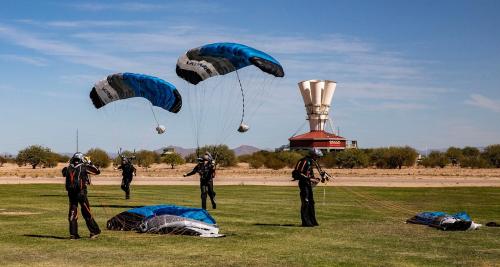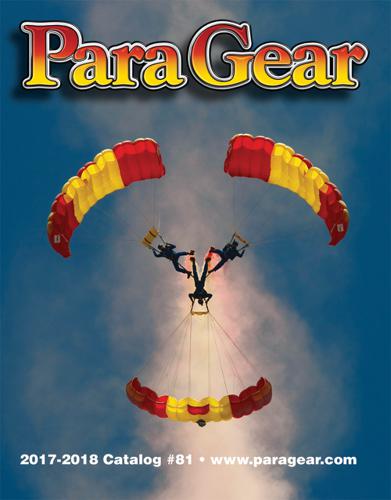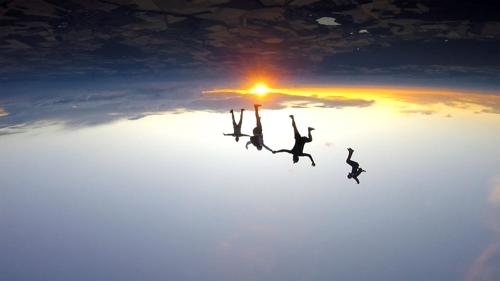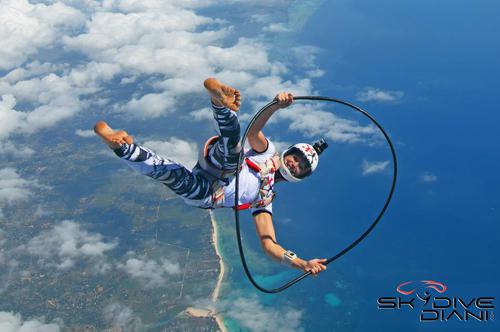The TOP Wingsuit flyers from around the globe will get together at Skydive Fyrosity℠, Overton, NV to compete in one of the most challenging skydiving competition – 2nd FAI World cup of Wingsuit Flying.
Nov 1-9, 2017 50-70 athletes from over 10 countries and five continents will test their mental and physical strength against each other in two disciplines – Performance Flying and Acrobatic Flying.
For years, wingsuit flying has allowed humans to realize the age-old dream of personal human flight - Zipping through the air like Superman. With the invention of the modern wingsuit, growth of pilot skills and wingsuit technology in the last 2 decades, now this dream is a reality.
Today, we live in spectacular and adventurous new era of aerial sports and Wingsuit flying history – World level competition!
The 2nd FAI World Cup of Wingsuit flying will crown the best wingsuit pilot – the fastest, the toughest and the most accurate one will take the gold.
The Event
2nd FAI World Cup of Wingsuit Flying 2017 will be held at Skydive Fyrosity℠ . The skydiving Drop Zone is located at Overton-Perkins Field, NV only 60 miles NE of Las Vegas directly east to the Valley of Fire and North of Lake Mead National Park.
The official bid to host the Event, was presented by Randy Connell – Director of Competition USPA and an Alternate USA Delegate to IPC on behalf of USA / USPA (United States Parachute Association) and Skydive Fyrosity℠ at the 67th IPC (International Parachuting Commission) meeting held in Faro, Portugal – Jan 25 – 29, 2017. The bid was voted and approved on Jan 29th, 2017 - http://www.fai.org/parachuting.
IPC (International Parachuting Commission) is the world governing body of competitions skydiving under the umbrella of the FAI (Fédération Aéronautique Internationale).
50 to 70 of the world’s best wing suit flyers and competitors, plus head of international delegations, judges, FAI / IPC officials USPA Officials, family, friends, skydivers, and guests from around the world are expected to descend upon Overton, NV from Nov 1 – 9, 2017 to compete for the gold in one of the most physically and mentally challenging sporting competition – Wingsuit Flying. Overton will be renamed to “Wingsuit City” for the duration of the event and will forever be recorded into the skydiving history as the home of the 2nd FAI World Cup of Wingsuit Flying - 2017.
Marilyn Kirkpatrick, the Clark County Commissioner for this area, is so excited to have Skydive Fyrosity℠ as part of the Clark County family and sees great potential benefits for the northeast area as this thrilling sport continues to grow.
Wing suiting development and Las Vegas have a long history together going back to 1996 – 97, one of the original developers of the modern wingsuit is a local Las Vegas resident and current Drop Zone owner of Skydive Fyrosity℠ – Sammy Vassilev.
“It is an incredible honor to have been part of the wing suiting from the very beginning and now to be able to host the 2nd FAI World Cup Wingsuit Flying at our home DZ here in NV is just the most incredible feeling”.
One of the original modern wingsuit designs is on a display at Skydive Fyrosity℠ and is available for anyone to see.
The Disciplines
The 2nd FAI World Cup of Wingsuit Flying consists of 2 separate events: Acrobatic Event and Performance Events.
The acrobatic competition event consists of team of 3 people, 2 acrobatic performers and a 1 camera man capturing the performance on video. The team of 3 will exit the aircraft at 12,500 above the ground and the performers have a working time of 65 seconds to demonstrate to the judges their ability and acrobatic skills, consisting of flyovers, flips, turns, relative flight. The Artistic event has 7 rounds (jumps) and is judged for accuracy of performance, artistic performance, completion of the formations, grips, and quality of the camera work. The camera man and the image the competitor camera person delivers is part of the acrobatic performance. Each jump is considered 1 round, 1 round is considered complete when all competitors have successfully completed the jump for each round including re-jumps.
The Performance Event is an individual competitor event consisting of 3 tasks – Speed, Time and Distance. Each task consists of 3 rounds (jumps) for the total of 9 competition rounds (jumps). The performance event does not have aerial video, however ground-to-air video can be used if such equipment is available. Therefore, the performance event is judged by state of the art GPS system which records the performance of each competitor delivered to the judges after each jump for evaluation. Once the data is downloaded into the software and evaluated the person going the fastest, furthest and spends the most time in the air is declared the winter in each task. The aircraft exit altitude is 12,500 above the ground up to 4 miles away from the landing area and the beginning of the performance evaluation starts at 3000 meters / 9,842.5 ft above the ground and ends at 2000 meters / 6,561.6 ft. The competitor performing the best within the 1000 meter / 3,280 ft evaluation window gets the gold medal.
2016 World Champions of Wingsuit Performance Flying:
1. Chris Geiler – USA - View profile
2. Travis Mickle- USA - View profile
3. Espen Fadnes – NOR - MView profile
2016 World Champions of Wingsuit Acrobatic Flying:
1. USA TEAM
2. USA TEAM
3. RUSSIA
The History of Wingsuit And How It Is Related to Las Vegas
An early attempt at wingsuit flying was made on 4 February 1912 by a 33-year-old tailor, Franz Reichelt, who jumped from the Eiffel Tower to test his invention of a combination of parachute and wing, which was similar to modern wingsuits. He misled the guards by saying that the experiment was going to be conducted with a dummy. He hesitated quite a long time before he jumped, and was killed when he hit the ground head first, opening a measurable hole in the frozen ground.
A wingsuit was first used in 1930 by a 19-year-old American, Rex Finney of Los Angeles, California, as an attempt to increase horizontal movement and maneuverability during a parachute jump.
These early wingsuits were made of materials such as canvas, wood, silk, steel, and whalebone. They were not very reliable, although some "birdmen", notably Clem Sohn and Leo Valentin, claimed to have glided for miles.
Las Vegas
In the mid-1990s, the modern wingsuit was developed by the French skydiver Patrick de Gayardon, adapted from the model used by John Carta. Patrick loved Las Vegas and few people know that he did a lot of jumps testing his suit and prepping it for the Grand Canyon flights in Las Vegas.
In 1997, in Las Vegas the Bulgarian second generation skydiver Sammy Vassilev a.k.a (Popov) designed and built a wingsuit which had a larger wing between the legs and longer wings on the arms. His prototype was developed at Boulder City, Nevada. Testing was conducted in a vertical wind tunnel in Las Vegas at Flyaway Las Vegas. Vassilev’s (Popov's) wingsuit first flew in October 1998 over Jean, Nevada, but it never went into commercial production. Vassilev’s (Popov's) design was a great improvement in creating lift; it was able to slow the vertical speed to 30 km/h while gliding horizontally at speeds over 200 km/h.
Today exactly 20 years later Sammy Vassilev is one of the co-founders of Skydive Fyrosity Las Vegas and will be hosting the 2nd FAI World Cup of Wingsuit flying!
The original wing suit built by Sammy Vassilev will be exhibited during the World Cup at Skydive Fyrosity℠. The suit was jumped during the World Championships of Wingsuit flying from the test pilot for INTRUDAIR - Benedikt Hovelmann and it is still flying fast and stable.
More history:
In 1998, Chuck "Da Kine" Raggs built a version which incorporated hard ribs inside the wing airfoils. Although these more rigid wings were better able to keep their shape in flight, this made the wingsuit heavier and more difficult to fly. Raggs' design also never went into commercial production. Flying together for the first time, Popov and Raggs showcased their designs side-by-side at the World Free-fall Convention at Quincy, Illinois, in August 1999. Both designs performed well. At the same event, multiple-formation wingsuit skydives were made which included de Gayardon's, Vassilev’s (Popov's), and Raggs' suits.
Commercial era
In 1999, Jari Kuosma of Finland and Robert Pečnik of Croatia teamed up to create a wingsuit that was safe and accessible to all skydivers. Kuosma established Bird-Man International Ltd. the same year. Birdman’s "Classic", designed by Pečnik, was the first wingsuit offered to the general skydiving public. Birdman was the first manufacturer to advocate the safe use of wingsuits by creating an instructor program. Created by Kuosma, the instructor program's aim was to remove the stigma that wingsuits were dangerous and to provide wingsuit beginners (generally, skydivers with a minimum of 200 jumps) with a way to safely enjoy what was once considered the most dangerous feat in the skydiving world. With the help of Birdman instructors Scott Campos, Chuck Blue and Kim Griffin, a standardized program of instruction was developed that prepared instructors.[4] Wingsuit manufacturers Squirrel Wingsuits, TonySuits Wingsuits, Phoenix-Fly, Fly Your Body, and Nitro Rigging have also instituted coach training programs.
The Host
Skydive Fyrosity
Located at Overton- Perkins field Airport about 55-minute drive from the Las Vegas Strip, North-East of Las Vegas in one of the most beautiful locations in Nevada, Skydive Fyrosity℠ offers the most incredible views of Valley of Fire, Lake Mead, Grand Canyon, Moapa Valley Indian Reservation, Mormon Mesa, Mormon Peak, Virgin & Colorado Rivers, Zion National Park, City of Las Vegas, City of Mesquite, City of St. George, UT and 3 US states, Arizona, Utah & Nevada. The most breathtaking view of your Las Vegas tandem skydiving experience are at Skydive Fyrosity™.
Skydive Fyrosity℠ is the only full-service Drop Zone in Southern Nevada and the Las Vegas area. Offering the best skydiving facility and state of the art tandem skydiving equipment in Las Vegas. Skydive Fyrosity℠ specializes in 1st time tandem skydive students and complete skydive training to all looking to learn to and become skydivers. Skydive Fyrosity℠ is the only certified Skydive Training Center (TC) by USPA in Nevada. We provide the most exclusive, personal and exhilarating tandem skydiving experience to first time tandem students, licensed and experienced skydivers, athletes, skydiving competitors, students, life lovers, adventurers, thrill seekers looking to live their lives to the fullest.
Skydive Fyrosity℠ offers the most advanced and complete skydive training via the exclusive AFP Training program, (Accelerated Freefall Progression Program) and skydiving education for the active and extreme sports adventurers looking to become licensed skydivers.
Skydive Fyrosity℠ welcomes all licensed skydivers, pro skydiving teams and athletes from around the world to enjoy our beautiful year-round Las Vegas Drop Zone.
More: www.SkydiveFyrosityLasVegas.com










